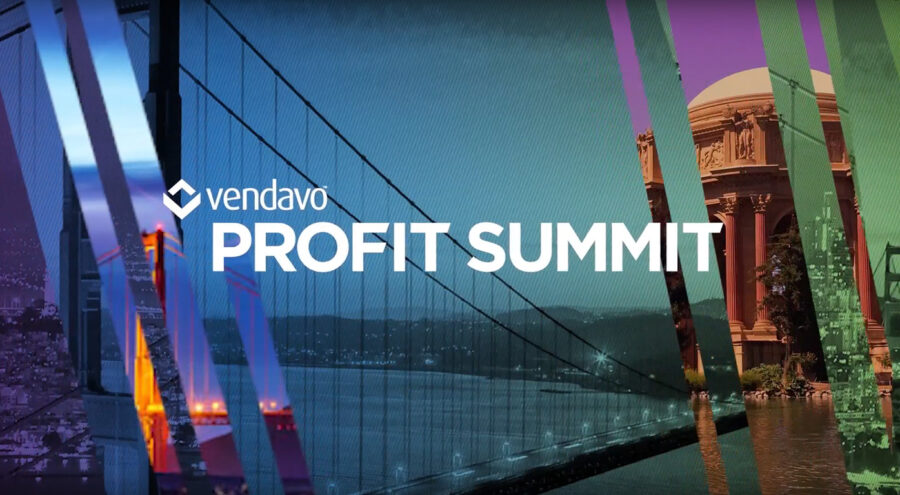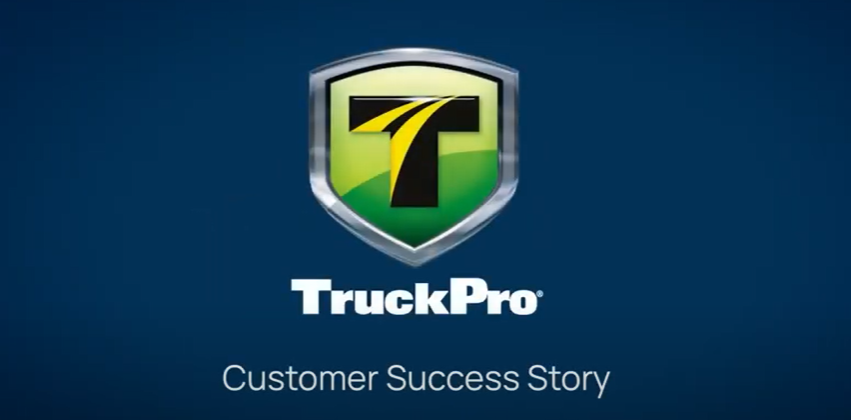Channel Incentives
What are Channel Incentives?
Driven by heightened customer expectations, accelerated by innovations in technology, and evolving market dynamics, the landscape of B2B and B2C commercial engagement continues to undergo a dramatic transformation.
In this context, reinforcing buyer loyalty and optimizing channel incentives has emerged as a critical strategy for organizations seeking not only to strengthen customer bonds and engage channel partners but also to enhance commercial excellence and maximize ROI across the value chain.
At the heart of these efforts, leveraging channel incentives has become a critical piece of the puzzle for organizations looking to advance their market position. Beyond just driving sales, these incentives solidify enduring connections between buyers and sellers and offer benefits to everyone from your direct customers down through your distribution network.
What are Channel Incentives?
Using different motivating variables and strategies, channel incentives cover the rewards, benefits, or bonuses provided by an organization to its channel partners, such as distributors, resellers, retailers, and other intermediaries in the sales channel. These incentives can take the form of cash, vouchers, gifts, or rewards that do not involve money.
Channel incentives are designed to promote, motivate, and reward partners for their contribution to achieving specific business objectives aligned with the company’s goals. They’re powerful tools for businesses aiming to strengthen relationships with their partners, encouraging them to sell products faster and motivating them to improve their product knowledge and engage in behaviors that help grow the business.
What are the Benefits of Channel Incentives?
The benefits of channel incentives are numerous, enabling organizations to actualize competitive advantages while enhancing brand awareness and market knowledge. Some of the core benefits include:
- Strengthening Partner Relationships: Channel incentive programs serve as catalysts for collaboration between organizations and their partners. This encourages enduring partnerships that motivate partners to sell products faster and engage in actions that benefit the business.
- Collaborative Program Design: Designing incentive programs with partner input promotes a sense of ownership and commitment. Aligning goals with value-received structures ensures that incentives appeal to the distinct needs and preferences of diverse partners.
- Operational Improvement: Efficient inventory management is a critical aspect of supply chain optimization, and channel incentives can play a strategic role in influencing partner behavior regarding inventory-related activities.
- Incentivizing Accuracy: Encouraging partners to provide accurate demand forecasts through channel incentives helps organizations optimize production schedules, reduce stockouts, and prevent overstock situations. This leads to improved overall supply chain efficiency.
- New Product Launches: Channels incentive programs play a crucial role in facilitating the launch of new products or clearing out existing inventory. Incentivizing partners to actively promote and stock newly launched products ensures a strong market entry. Offering bonuses, higher margins, or exclusive access to new releases encourages partners to prioritize promoting new offerings.
- Clearing Inventory: In situations where excess inventory poses a challenge, incentives can be strategically designed to motivate partners to focus on selling these products. This might involve special promotions, additional discounts, or bonus incentives for clearing specific inventory.
- Demand Forecasting and Planning: Channel incentives can be strategically employed to influence reseller behavior concerning inventory management. Incentivizing partners to provide accurate demand forecasts and adhere to inventory planning helps organizations optimize production schedules, minimize stockouts, and reduce excess inventory costs.
- Data Collection: Deploying channel incentive programs involves establishing effective tools for data collection, which can produce valuable analytics and insights for organizations to utilize across various aspects of their business.
Besides their impact on accelerating growth, operational efficiency, financial performance, customer relationships, and overall productivity increase, some other less obvious benefits are the ability to enter new markets, improve brand awareness, enhance partner product knowledge, and gain a competitive edge.
Types of Channel Partner Incentive Programs
A diverse array of channel partner incentive programs exist, each catering to different goals and partner types. Here’s an overview.
- Channel Sales Incentives: These incentives are directly linked to sales performance, rewarding partners for hitting or exceeding their sales targets with bonuses or other financial rewards.
- Sales Performance Incentive Funds (SPIFs): SPIFs offer immediate rewards for individual sales representatives when they successfully sell certain products or services, spurring short-term boosts in sales efforts.
- Value Added Reseller (VAR) Programs: VARs enhance existing products before resale. These programs provide incentives based on added value such as customization or integration services provided by the reseller.
- Market Development Funds (MDFs): MDFs support various marketing activities undertaken by partners. The funds can be used for advertising campaigns, trade show participation, or other promotional events aimed at generating demand and leads.
- Cooperative Funding (Co-op funding): Co-op funding encourages partners to align their marketing initiatives with those of the vendor through cost-sharing arrangements that subsidize joint marketing efforts.
- Channel Rebates: Channel rebates offer monetary returns after purchase based on volume sold over time—encouraging ongoing product movement rather than one-off purchases.
- Deal Registration Incentives: By registering deals early in the sales cycle, channel partners receive protection against competition and potential additional discounts upon closing registered opportunities.
- Referral Incentives: When channel partners refer new clients who make a purchase, they receive referral fees—a simple way to leverage existing relationships for new business generation.
- Enablement and Training Incentives: Partners often get access to specialized training materials; incentivizing completion can increase product knowledge leading up more effective selling strategies.
- Loyalty Incentives and Partner Retention: This program rewards enduring partnerships through benefits like higher discounts or privileged access to resources, fostering sustained performance and growth.
- Warranty Registrations and Bundling: By coupling warranty registrations with product bundles, partners can offer customers compelling value propositions that encourage larger purchases while ensuring customer confidence post-sale.
- Activity-Based Incentives: These incentives recognize and reward the actions that lead to sales success—such as diligent lead generation or effective pipeline management—promoting productive behaviors throughout the sales process.
Utilizing the diversity of channel incentive programs is key to motivating different behaviors and outcomes. From spurring immediate sales actions with SPIFs to cultivating long-term loyalty and partnership growth, each program plays a pivotal role in driving the collective success of vendors and their channel partners.
How to Create a Channel Incentive Program
To create an effective channel incentive program, organizations should start by clearly understanding their partner landscape and overarching needs. It’s crucial to link business objectives with expected behavior.
A well-structured program involves setting realistic goals, ensuring transparency, and offering attractive rewards that resonate with partners. By understanding the benefits, incentive types, creation strategies, ROI upside, key metrics, system integration, and automation methods–businesses can develop and manage successful channel incentive programs that foster collaboration, boost partner engagement, and contribute to sustainable long-term success.
Objectives & Goal Setting
Clearly define the target goals and desired behaviors the program aims to drive, such as increased sales, market share, brand awareness, or product knowledge. Determining the objectives behind the program can also help you pinpoint the most relevant and impactful metrics for measuring success.
Transparency & Collaboration
Establishing a collaborative environment is crucial for achieving shared objectives, and incentive programs can be tailored to align with mutual goals such as sales targets, market expansion, and brand visibility. By aligning incentives with mutual objectives–such as revenue and margin growth targets and market expansion–businesses can tap into stronger loyalty and ensure channel partners remain invested in the success of the products or services they represent.
But strategy alone is not sufficient. Nowadays, organizations are forced to align incentives with complex pricing models, ensuring that the value offered to channel partners can reflect current market dynamics and the overall organization’s commercial strategy. From an execution point of view, this requires seamless integration and a comprehensive understanding of the interdependencies between incentive program management systems and pricing technology platforms.
Flexibility & Execution
Optimal channel incentive strategies involve tailoring programs to the diverse needs and preferences of different resellers. Providing flexibility in incentive structures, such as tiered programs or personalized rewards, enhances partner satisfaction and fosters a sense of partnership rather than transactional collaboration.
Navigating Dependencies on the Value Chain End-to-End
Navigating sell-in and sell-out dependencies is key to a successful channel incentive program.
Sell-in strategies involve influencing resellers to purchase and stock products. Aligning channel incentives with sell-in objectives ensures that partners actively promote and stock products, driving market penetration and channel visibility.
- Volume-Based Incentives: Offering incentives tied to the volume of products purchased motivates resellers to increase their initial orders. This can be particularly effective during product launches or when introducing new product lines to the market.
- Early Access Programs: Providing partners with exclusive early access to new products or features can be a powerful incentive for increased sell-in. This strategy not only boosts initial orders but also enhances partner loyalty.
Sell-out strategies focus on encouraging resellers to actively promote and sell products to end consumers. Aligning incentives with sell-out performance ensures that partners prioritize consumer-facing activities.
- Performance-Based Bonuses: Incentivizing partners based on sell-out performance, measured through actual customer purchases, encourages resellers to focus on effective marketing and sales strategies.
- Customer Loyalty Programs: Partners can be motivated to prioritize sell-out activities by participating in customer loyalty programs. These programs may include exclusive discounts for end customers, fostering brand loyalty and repeat business.
Relevancy & Personalization
With the consumerization of B2B into B2B2C, buyers and resellers expect relevant, tailored offerings and experiences. Channel incentives are instruments that can be optimized by incorporating elements like personalized rewards based on behavior, loyalty programs to continuously engage the buyer, and exclusive promotions, mirroring the individualized approach seen in B2C interactions.
Recognizing the diversity among channel partners and their varied business models, it’s crucial to offer customization and flexibility within incentive programs. Tailoring programs to the unique needs of each partner enhances satisfaction and encourages sustained engagement.
- Personalized Rewards: Offering personalized rewards based on partner preferences adds an extra layer of customization. This might include tailored experiences, exclusive access to resources, or personalized recognition that resonates with individual partners.
- Loyalty Programs: Implementing loyalty programs within channel incentives creates a sense of exclusivity and rewards partners for long-term collaboration. These programs may include tiered memberships with escalating benefits tied to performance.
- Exclusive Promotions: Offering partners exclusive access to promotions or early releases creates a personalized experience. This not only strengthens the partner relationship but also aligns with the expectation of personalized experiences in the B2B space.
- Tiered Incentive Structures: Implementing tiered incentive structures allows organizations to cater to partners with different capabilities and capacities. Higher-performing partners can access more lucrative rewards while emerging partners are incentivized to grow their contributions.
Technology & Digital Enablement
As B2B transactions increasingly shift towards digital platforms, channel incentives need to align with the digital transformation of partners. Leveraging technology platforms for incentive management ensures seamless communication, real-time tracking, and accessibility.
- Integrated Technology Platforms: Integrating channel incentive programs with advanced technology platforms such as customer relationship management (CRM) systems and partner portals streamlines communication and enhances visibility.
- Real-Time Tracking: Digital platforms enable real-time tracking of partner performance, allowing organizations to make data-driven decisions and adjust incentive structures promptly based on evolving market conditions.
Utilizing channel management software provides a reliable system to track partner performance and measure the effectiveness of the incentives in driving the desired behaviors.
Lastly, it’s critical for organizations to continuously evaluate the program’s performance and make adjustments as needed to keep it relevant and impactful. This often involves introducing new incentives to maintain partner interest and engagement.
Tips to Improve ROI of Your Channel Incentive Program
To improve the ROI of a channel incentive program, consider the following tips to better optimize for success:
- Set Clear Objectives: Define specific, measurable goals for the program, such as increased sales, market share, or partner engagement.
- Understand Partner Needs: Tailor the program to the preferences and motivations of your channel partners to ensure its effectiveness.
- Choose the Right Incentives: Select a mix of incentives, including both monetary (e.g., rebates, discounts, etc.) and non-monetary rewards (e.g., training programs, exclusive events, etc.) to appeal to different partner preferences.
- Effective Communication: Clearly communicate the program details, requirements, and rewards to ensure partner understanding and engagement.
- Track and Measure Performance: Implement a system to track partner performance and measure the program’s impact on desired behaviors and outcomes.
- Regularly Refresh the Program: Introduce new incentives and keep the program fresh to maintain partner excitement and engagement.
- Senior Management Support: Ensure that the program has the support of senior management to make decisions, allocate resources, and adjust the program as needed.
With the guidance of these tips, organizations can improve the effectiveness of their channel incentive programs and maximize their ROI potential.
Key Metrics for Measuring Channel Incentive Program Success
Beyond financial impact, measuring the success of channel incentives involves tracking key metrics across different aspects of the program, such as partner engagement, sales performance, market penetration, and customer satisfaction. Some of the most pertinent metrics worth measuring focus on:
- Sales Performance:
- Revenue Growth: Measure the impact on overall sales revenue in the channel.
- Market Share: Evaluate changes in market share as a result of the incentives.
- Channel Partner Engagement:
- Participation Rates: Monitor the percentage of eligible partners participating in the program.
- Activation Rates: Track how quickly partners activate or enroll in the incentive program.
- Program Adoption:
- Redemption Rates: Measure the rate at which partners redeem incentives or rebates.
- Utilization Rates: Analyze how frequently channel partners take advantage of the program benefits.
- Return on Investment (ROI):
- ROI Calculation: Evaluate the financial return compared to the investment made in the incentive program.
- Cost of Sale: Analyze the cost-effectiveness of the program in terms of generating sales.
- Partner Performance:
- Product Mix: Assess changes in the mix of products or services sold by partners.
- Cross-selling/Up-selling: Evaluate the success of encouraging partners to sell complementary or higher-margin products.
The integration of advanced pricing technologies allows organizations to expand the scope of metrics for measuring the success of channel incentive programs.
How to Automate and Streamline Channel Incentives
Automation is crucial for managing and streamlining channel incentive programs efficiently. The convergence of channel incentive programs with advanced commercial excellence solutions like Vendavo represents a qualitative jump in how organizations approach their partner relationships.
The core advantages of leveraging technology involve gaining access to data-driven insights, analytics, and machine learning algorithms to optimize channel pricing strategies, ensuring that channel partners are equipped with the most competitive and dynamic pricing structures:
- Dynamic Pricing Optimization: Having the ability to dynamically adjust multiple pricing waterfall elements concurrently based on real-time market conditions, competitor pricing, inventory availability vs customer demand, and other relevant factors allows all stakeholders in the value chain to effectively execute complex commercial policies This agility enables channel partners to remain competitive and capitalize on market opportunities.
- Margin Protection: By leveraging intelligent and integrated pricing solutions, organizations can protect profit margins even when offering various incentives to channel partners. Ensuring consistency across multi-tiered distribution models, avoiding channel cannibalization, and effective cash flow management.
- Data-Driven Decision-Making: Adopting the role of a data-driven organization is crucial for evaluating the impact of channel incentives on pricing strategies and overall financial performance. In addition to traditional metrics like partner engagement and sales growth, organizations can now evaluate the impact on overall revenue, profit margins, and the effectiveness of pricing strategies.
With the power of technology, you can gradually mature and elevate commercial strategies to align buyer behavior with business objectives. Organizations can leverage technology like Vendavo’s solution framework to automate reward reconciliation and payouts, track partner performance, and provide real-time visibility into program metrics. Such tools reduce administrative burdens that impede productivity, minimize errors, increase financial profitability, and enhance overall program effectiveness. Commercial excellence platforms that include channel management solutions provide real-time visibility across different processes and systems into program performance. World-class analytics solutions, such as Vendavo’s Margin Bridge Analyzer, offer actionable insights into the impact of incentive programs on customer behavior and allow us to measure the impact on profitability and overall revenue.



